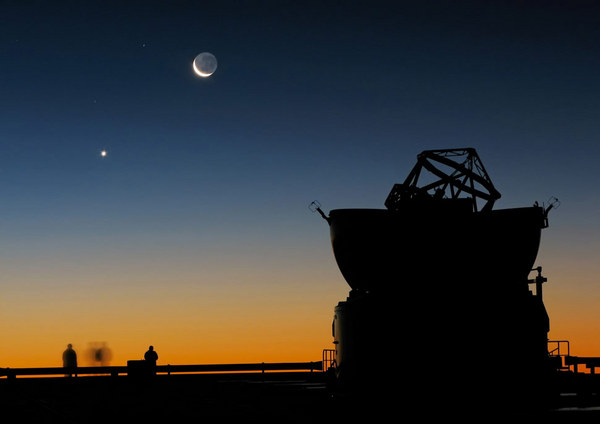The Latest from Boing Boing |  |
- Composite photos made from time-series - "Chrono-Cubism"
- Internet furnishes fascinating tale of a civil rights era ghosttown on demand
- Googy tiki bowling alley model railroad building!
- Princess Bride lightsaber swordfight
- Captain Awesome and his awesome signature -- awesome!
- Hilarious and gripping D&D game with Chris Perkins, Mike Krahulik, Jerry Holkins, Scott Kurtz, and Wil Wheaton
- Travel posters for comic book cities
- Pasta carpet!
- Highlights from TEDWomen Session 2: Feministing.com, Sheryl Sandberg of Facebook, and A Call To Men
- Question asked by Eskimo hunter to priest
- The worshipping baby
- Report: Wikileaks cables show Texas company "helped pimp little boys to stoned Afghan cops"
- Whatever the Julian Assange arrest is about, it's not about how much women suck
- From Bulgaria, with love
- How To: Move a rock without touching it
- College for Randroids goes bust
- Inside the world's first transistor
- Pundit calls for development of magical anti-Wikileaks computer virus
- Scientists figure out structure of enzyme that causes plaque to stick to teeth
- Highlights from TEDWomen Session 1: finance in Iceland, Hans Rosling on washing machines, and how women + humor = change
- Nick DeWolf's hungry eye
- Susan Philipsz becomes first sound artist to win Turner Prize
- Marc Weidenbaum of Disquiet.com: Welcome to the Boing Boing guestblog!
- Erik Davis: new anthology Nomad Codes
- It's Only a Sliver Moon (Daily Astronomy Log with Mike Brown)
- Online merchant who terrified customers to improve SEO is so very busted
- Sometimes, Scientists are Furries (photo)
- The Decemberists and Polaroid
- Poland's "Crooked House"
- Snow Chihuahua (Boing Boing Flickr Pool)
| Composite photos made from time-series - "Chrono-Cubism" Posted: 08 Dec 2010 02:11 AM PST  Brazilian photographer Diego Kuffer sez, "Photography only lets you capture instants (even long exposures are only blurred instants). So, I hacked the idea of photography, mixing together many photos of the same scene into a single one, slicing and dicing the images and putting them back together, chronologically. I call the grammar behind it 'chrono cubism.'" Chrono-Cubism (Thanks, Diego!) |
| Internet furnishes fascinating tale of a civil rights era ghosttown on demand Posted: 07 Dec 2010 11:05 PM PST Last week, Redditor inkslave found himself in Cairo Illinois, an abandoned ghost-town that had fallen to utter ruin. After coming up blank on Wikipedia and Google, he asked Reddit just what happened to Cairo -- and got an immediate answer from a scholar who wrote his master's thesis on the subject: Looking at a map of the USA, you'd think there would be a booming city at the confluence of the Mississippi and Ohio Rivers. In the late 19th century, Cairo was a booming town, known as a railroad and river traffic hub with the untamed culture you'd expect from a northern New Orleans. Even though Cairo is in Illinois, it is the state's southern-most city and is actually further south than Richmond, Virginia. Its white-black race dynamic was as paternalistic as any in the "south," and its civil rights history was very violent. Though most people blame the violence in the 1960s and 70s for Cairo's economic decline, I found that it was really part of a general decline throughout the 20th century. The religious element in Cairo was able to ban gambling and prostitution in the late 19th century, so part of the allure of a northern New Orleans was lost and a vibrant industry was snuffed out. Then, the decline of the railroad and river traffic industries really ruined the town. In my research I found that the economic boycott in the 60s and 70s (many white business owners chose to close their businesses and move away rather than hire black employees) was really the final death knell of a town that had already been in decline since the 1920s, well before the Great Depression.What the hell happened to Cairo, Illinois? (Reddit) A Civil Rights Era Ghost Town (Visual News) (via Warren Ellis) |
| Googy tiki bowling alley model railroad building! Posted: 08 Dec 2010 12:12 AM PST  Mike Kozart, a decidedly happy mutant, has published a photo of his "Aloha Lanes" model -- a 1/87th HO scale googy bowling alley/tiki lounge that will soon be available in kit form: "This is part of a whole series of HO scale model kits aimed at the scale Model Railroader. There will be drive-thru Car Washes, theaters, banks, shopping centers, Department stores, car dealerships, mountain vacation homes, Yacht Clubs and many more. These will be sold under the CENTURY SCALE MODEL line." ALOHA LANES a c. 1960 Southern California Bowling Complex in a South Seas setting (via Dinosaurs and Robots)
|
| Princess Bride lightsaber swordfight Posted: 07 Dec 2010 10:55 PM PST In this youtube, talented video editor AllenGraph replaces the swords in the epic Inigo/Roberts swordfight from The Princess Bride with lightsabers. As Tor.com says, "The internet adds lightsabers to a lot of things, so it's hard to accept that we're only now seeing Inigo Montoya and The Dread Pirate Roberts's duel from The Princess Bride with lightsabers. The pairing is perfect. How did this not happen years ago?"
The Princess Bride...With Lightsabers
|
| Captain Awesome and his awesome signature -- awesome! Posted: 07 Dec 2010 10:48 PM PST  After a long legal battle, Douglas Allen Smith, Jr., an out-of-work carpenter, has won the right to change his name to Captain Awesome, in homage to a character on NBC's Chuck. Mr Awesome has the world's most awesome signature, too. His original petition was delayed because the first judge he faced "questioned his seriousness." But Mr. Awesome would not be deterred. Mr. Awesome hit the books at the University of Oregon Law School library to study up on name change precedents, and when Mr. Awesome came to court a second time, the Judge was named Douglas Mitchell. Douglas helped a fellow Douglas out. I know. I'm tearing up, too.This Is How Captain Awesome Signs His Name (via Neatorama)
|
| Posted: 07 Dec 2010 10:45 PM PST In this rollicking podcast celebrating the launch of the Dungeons and Dragons "red box" set, Chris Perkins, Mike Krahulik, Jerry Holkins, Scott Kurtz, and Wil Wheaton play a fun, funny, and tense game of D&D. Great, great listening. It's also available as a series of YouTube videos. (via Super Punch)
|
| Travel posters for comic book cities Posted: 07 Dec 2010 10:41 PM PST  Justin Van Genderen's vintage style travel posters for the storied cities of comicbookland are on sale for $18.03 each. Justin Van Genderen's vintage style travel posters for the storied cities of comicbookland are on sale for $18.03 each. Gallery: ComicTravelLocations (5 images) (via Super Punch) |
| Posted: 07 Dec 2010 10:36 PM PST  The We Make Carpets people have realized one of humanity's finest dreams: the creation of a brilliant pasta carpet made from uncooked ziti, macaroni, and others. pasta carpet 2 (Thanks, Markhurst, via Submitterator!) |
| Highlights from TEDWomen Session 2: Feministing.com, Sheryl Sandberg of Facebook, and A Call To Men Posted: 07 Dec 2010 09:52 PM PST There were three really amazing talks in the second session of TEDWomen this evening. (Highlights from session 1 are here.) Here's a quick summary: Courtney E. Martin, the 30-year old co-editor of Feministing.com, gave an engaging and deeply moving talk at Session 2 of TEDWomen today about how her generation is re-imagining feminism. She explained it as three paradoxes: 1. Reclaiming the past and promptly forgetting it. 2. Sobering up about our smallness and maintaining faith in our greatness. 3. Aiming to succeed wildly and being fulfilled by failing really well. We are whiplashed between an arrogant overestimation of ourselves and a servile underestimation of ourselves.After she picked herself up from her disillusion, Martin realized that life is not about glory or security; instead, you have to embrace the paradoxes, act in the face of overwhelm, and learn to love really well.
We as women face much harder choices between professional success and personal fulfillment. So how do we keep women in the workforce? What kind of messages do we want to give to ourselves and our daughters? Sandberg admits even she doesn't have the answer, but provides three insights that really resonated with me: 1. Sit at the table. Nobody gets to the corner office by sitting at the side of the table. No one gets a promotion if they don't understand or own their success. I wish I could tell that to my daughter, but it's not that simple.Sandberg also points out that success and likability are positively correlated for men and negatively correlated for women. So when a woman is successful, people tend not to like her. This was proven in an experiment done with students, where the exact same example of a successful leader was given twice, one named Herbert and one named Heidi. Everyone loved Herbert; not that many people liked Heidi. 2. Make your partner a real partner. 3. Don't leave before you leave. We're all busy. Everyone's busy. A woman is busy. She starts thinking about having a child... about making room for the child, and literally from that moment she doesn't raise her hand anymore. She doesn't take on promotions or look for new projects. Sandberg ended by saying that she hopes that things will change for future generations, and that one day, her daughter will not only succeed, but be liked while doing so. I strongly recommend that you watch this talk when it goes live on the TED web site. One of the few men to speak today was Tony Porter, who runs an organized for men to end violence against women called A Call To Men. Porter was raised in Harlem and the Bronx, where men were raised to have no fear, no emotions except anger, to be dominant, in charge, superior, and strong. Women, on the other hand, are inferior, have less value, and are objectified. He calls this the collective socialization of men, or the "man box." Porter makes a call to redefine manhood. Why can't boys cry if they're scared or sad? Why does a man have to apologize for crying at his own child's funeral? It if destroys a boy to be called a girl, then what are we teaching him about girls? He ends by saying: "My liberation as a man is tied to your liberation as a woman." Porter was amazing, but a few of us did find it odd that he and the one other man to go on stage during this session — a Maasai father who came full circle to accept his daughter back into his home after she ran away to escape female genital mutilation — were the only ones who got a standing ovation. Why do the few men on stage get applauded more loudly than the multitudes of women who have done amazing things? |
| Question asked by Eskimo hunter to priest Posted: 07 Dec 2010 08:12 PM PST Via Futility Closet: I read about an Eskimo hunter who asked the local missionary priest, 'If I did not know about God and sin, would I go to hell?' 'No,' said the priest, 'not if you did not know.' 'Then why,' asked the Eskimo earnestly, 'did you tell me?' |
| Posted: 07 Dec 2010 07:50 PM PST Via Sociological images: "The amazing one-minute video [above] shows Ava Grace, a child of about two, at Ignited Church in Lakeland, Florida (source). The clip beautifully illustrates the socialization of children into particular kinds of worship. With hand motions, body movements, and facial expressions, this child is doing a wonderful job learning the culturally-specific rules guiding the performance of devotion." |
| Report: Wikileaks cables show Texas company "helped pimp little boys to stoned Afghan cops" Posted: 07 Dec 2010 08:15 PM PST In the Houston Press, an extensive blog post untangling an alarming story from the state department cables: "another horrific taxpayer-funded sex scandal for DynCorp, the private security contractor tasked with training the Afghan police," and apparent proof that the company procured male children for bacha bazi ("boy-play") parties. The story boils down to this: this company, headquartered in DC with Texas offices, helped pimp out little boys as sex slaves to stoned cops in Afghanistan: Read the whole post. Frontline covered the phenomenon earlier this year—I watched the documentary when it first aired in the US. It was hard to watch. The notion that an American company enabled the sexual and physical abuse of kids like this is nauseating. Video embedded below, may be geo-blocked for folks outside the USA.
(via Dave Winer) |
| Whatever the Julian Assange arrest is about, it's not about how much women suck Posted: 07 Dec 2010 07:20 PM PST At Salon, Kate Harding explains what Julian Assange is actually being charged with, why the claims that his accusers have CIA ties are pretty damn flimsy, and wraps it all up with a nice reminder that we can support what Wikileaks does and question the timing and handling of these rape accusations, all while simultaneously NOT diving off a cliff into victim-blaming, slut-shaming, or any other shameful treatment of two women who—for all we know—really were sexually assaulted. This is one hell of a post, effectively going right to the heart of what's been bugging me about the reaction to Assange's arrest. And Harding positively nails the landing.
I also highly recommend Feministe's look at what "sex by surprise" really means, and the larger implications of rolling your eyes at it.
|
| Posted: 07 Dec 2010 06:27 PM PST Something to keep in mind if you're ever in Bulgaria—the country boys are, according to one recent study, better endowed than their citified peers. |
| How To: Move a rock without touching it Posted: 07 Dec 2010 06:07 PM PST  Racetrack Playa in Death Valley is famous for it's "living stones"—photographed here by BoingBoing reader Rajesh Vijayarajan. In this patch of desert, rocks, ranging in size from pebbles to boulders, have left trails in the dry clay, as if they moved across the mostly flat Playa by themselves. Based on analysis of the trails, scientists assume the rocks do move, but they still don't know exactly how. To date, nobody's ever seen the process in action. But there is a good theory. It starts with the fact that Racetrack Playa is also, occasionally, a very shallow lake.
That's currently the accepted professional explanation. But, based on what he observed on a trip to the Play, blogger Brian Dunning thinks the scientists are missing two key factors: Ice, and a lake that moves.
I didn't totally follow the description the first time I read it, but about half way through this video, you can see the phenomenon he's talking about. It's pretty fascinating. Scientists have thought about the role ice might play in moving the stones, and they've mostly ruled it out. Why? Because fresh trails have been spotted during periods when the Playa was too warm for ice to form. (Check out Chapter 7 of this 1998 dissertation. It also gets into more detail about what makes the surface of the Playa slick enough that rocks could move over it when it was wet.) That paper doesn't mention the action of the lake, itself, moving across the valley, though. And I haven't found any other scientific references that do. I wonder if this is something researchers haven't observed? Or if it's just interesting, but not necessary to the movement of the rocks. Image used with permission. Found on the BoingBoing Flickr Pool. |
| College for Randroids goes bust Posted: 07 Dec 2010 05:59 PM PST |
| Inside the world's first transistor Posted: 07 Dec 2010 06:20 PM PST I love prototype technology. There's a magic in seeing what the original working model looked like, which makes so many systems instantly more-understandable to a lay person. Strip away the perfection and packaging, and you can see what's really going on. In this video, Bill Hammack—professor of engineering at the University of Illinois at Urbana-Champaign and part-time Engineer Guy for the Internet—demonstrates this effect by introducing us to a model of the world's first transistor. An amplifier for electric signals, transistors were at the heart of all the miniaturization and techno-populism that began in the 1960s and 70s. Watch this video, and you'll understand how a transistor works, and why these little things are so very important. Thanks, Engineer Guy! Learn more at PBS's great Transistorized! site |
| Pundit calls for development of magical anti-Wikileaks computer virus Posted: 07 Dec 2010 04:27 PM PST It's hard to even begin to summarize coverage on Wikileaks-related stuff today. But if you read one thing, read Marc Thiessen's fresh item at the Washington Post. It's not the fact that he's vigorously opposed to Wikileaks that's interesting, but rather his understanding of the technology at the heart of this entire saga: Some say attacking WikiLeaks would be fruitless. Really? In the past year, the Iranian nuclear system has been crippled by a computer worm called "Stuxnet," which has attacked Iran's industrial systems and the personal computers of Iranian nuclear scientists. To this day, no one has traced the origin of the worm. Imagine the impact on WikiLeaks's ability to distribute additional classified information if its systems were suddenly and mysteriously infected by a worm that would fry the computer of anyone who downloaded the documents. WikiLeaks would probably have very few future visitors to its Web site.It all gives me this vision of Thiessen dreaming about single-handedly stopping Wikileaks by typing "OVERRIDE PASSWORD" into Julian Assange's laptop, then hitting the delete button after a stern British female voice declares "ACCESS GRANTED." Then there is a tense moment as a glowing neon blue progress bar slowly deletes Wikileaks, but will it finish before Julian returns from the virtual reality cyber conference with George Soros where they are laughing about having just gotten an oblivious Julian Sands thrown in jail? |
| Scientists figure out structure of enzyme that causes plaque to stick to teeth Posted: 07 Dec 2010 04:34 PM PST Scientists have modeled the structure of the enzyme used by the dirty rotten Lactobacillus reuteri bacterium to attach itself to tooth enamel and cause cavities. "This knowledge will stimulate the identification of substances that inhibit the enzyme. Just add that substance to toothpaste, or even sweets, and caries will be a thing of the past." Tooth Decay to Be a Thing of the Past? Enzyme Responsible for Dental Plaque Sticking to Teeth Deciphered Photo by Shakespearesmonkey. Creative Commons Attribution 2.0 Generic license. |
| Posted: 07 Dec 2010 09:45 PM PST I'm at TEDWomen, which takes today and tomorrow at the International Trade Center in Washington, DC. The organizers have turned this venue into a wonderful little sanctuary with massage stations, a cartoon exhibit, and lots and lots of coffee — much needed after the red eye that brought me to the biting cold East Coast just this morning. Here are some highlights from the first session:
Hans Rosling gave a funny talk that posited economic development against the proliferation of the washing machine. When Rosling was seven, he watched his mother load a washing machine for the first time in his life. They invited his grandmother over to watch — she has been heating stoves on firewood to handwash clothes for seven children with her entire life — and the grandmother sat mesmerized in front of the contraption through the entire wash cycle. "To [her], the washing machine was a miracle." It doesn't take much research to know that the bottom two billion people live on less than $2 a day — below the poverty line — and that one billion people spend more than $80 a day — above what he calls the "air" line. Rosling did some serious digging and number crunching to divvy up the economic scale by washing machine ownership. It turns out that an additional one billion people own washing machine, i.e. live above the "wash" line. These people spend about $40 a day. This means that, in a world with seven billion people, two billion have washing machines and the remaining five billion still wash their clothes by hand. This is a task that mainly falls on women, who spend hours every week performing this heavy-duty task by hand, often lugging water to their homes or their laundry to a water source far away. "They all want a washing machine. There's nothing different about their wish than my grandma's two generations ago in Sweden." Rosling wrapped his talk with two important points: one, that as the population grows, the top consumers of money and energy need to spend less energy and transfer some of the current energy usage to green energy usage. Two, having a washing machine allowed him and his mother the time to enjoy things like reading books.
Tomasdottir thinks pairing female values with sustainability practices will yield some of the most interesting investment opportunities in the years to come. A lot of people try to rebuild models that have failed over and over again, but a new way of thinking about consumerism and the balance between the men and women could lead good businesses to change the world.
* Ted Turner showed up for a quick interview with organizer Pat Mitchell. He reiterated an idea presented in the past that, if only women held positions in elected office for the next 100 years, they would spent money on healthcare and education — not aircrafts and weapons — and end war. When asked what women have influenced him most, he said: "My mother, my last wife Jane Fonda, my daughters... and all the women I've loved before."
|
| Posted: 07 Dec 2010 05:24 PM PST  Nick DeWolf was one of those passionate, indefatigable amateurs who were just made to live on via the Internet. He wasn't an amateur at his chosen profession, which was engineering; he co-founded Teradyne, a manufacturer of electronic test equipment that survives him. In his spare time, though, he was a photographic hobbyist, and a good one, and over a period of about fifty years he photographed everything: Guys in cars. The Boston skyline. Women on subway platforms. How many images are there in total? Who knows? DeWolf's devoted son-in-law, Steve Lundeen, has been uploading them a few at a time to Flickr for about the last six years. There are now almost 44,000 of them. Taken together they represent a vast, varied swath of the latter 20th century. "He carried a camera with him at all times," Lundeen writes, "usually a family of cameras. If you knew Nick, you got used to this...eventually, he'd be pointing his camera at you." (Via Retro Thing.) Nick DeWolf was one of those passionate, indefatigable amateurs who were just made to live on via the Internet. He wasn't an amateur at his chosen profession, which was engineering; he co-founded Teradyne, a manufacturer of electronic test equipment that survives him. In his spare time, though, he was a photographic hobbyist, and a good one, and over a period of about fifty years he photographed everything: Guys in cars. The Boston skyline. Women on subway platforms. How many images are there in total? Who knows? DeWolf's devoted son-in-law, Steve Lundeen, has been uploading them a few at a time to Flickr for about the last six years. There are now almost 44,000 of them. Taken together they represent a vast, varied swath of the latter 20th century. "He carried a camera with him at all times," Lundeen writes, "usually a family of cameras. If you knew Nick, you got used to this...eventually, he'd be pointing his camera at you." (Via Retro Thing.) |
| Susan Philipsz becomes first sound artist to win Turner Prize Posted: 07 Dec 2010 02:53 PM PST Student protests greeted the announcement of Susan Philipsz as this year's winner of the Turner Prize, the biggest annual award for an artist in Britain. As the Guardian noted, she is the "first person in the history of the award to have created nothing you can see or touch." The students, though, weren't protesting the absence of visuals in Philipsz's art; they were using media coverage of the announcement as an opportunity to protest prospective diminished budgets for the arts at universities. The work for which Philipsz was commended, an installation titled "Lowlands," involved recordings of her singing an oft-covered Scottish song, "Lowlands Away," being played by the river Clyde in her native Glasgow. Her plain, natural, casual (i.e., largely untrained) voice seemed to emanate from nowhere and everywhere. It echoed against a massive bridge structure, and mixed in with the sounds of the environment.
The news about Philipsz's triumph is great for several reasons. The 45-year-old Scottish artist's win marks a major milestone for sound art, which is to say for so-called fine art in which audio is the core if not sole constituent element. It wasn't just the first time a sound-art work won -- it was the first time one was even nominated for the Turner.
And it's also a maturing point for sound art, which often involves electronically produced noises, but as evidenced by Philipsz's headline-making accomplishment, can also comprise popular song. (In addition, it's worth noting that exactly two decades ago in 1990, there was no Turner prize at all due to the absence of a sponsor, so it's great the thing is still around.) Philipsz is the fourth woman to win the Turner. Past winners include poop-friendly duo Gilbert & George, skull-bedazzler Damien Hurst, and video remixer Douglas Gordon (whose slowing down of Alfred Hitchcock's Psycho provided inspiration for Don DeLillo's recent novella, Point Omega). More on the prize at tate.org. See also this Guardian story (one of many). |
| Marc Weidenbaum of Disquiet.com: Welcome to the Boing Boing guestblog! Posted: 07 Dec 2010 01:59 PM PST  Today is Boing Boing guestblogger bonanza day: first, I introduced astronomer and "Pluto Killer" Mike Brown, then evolutionary biologist and ür-atheist Richard Dawkins, and now I am thrilled to welcome Marc Weidenbaum. In 1996, Marc founded the seminal and influential website/blog/e-newsletter Disquiet, covering all things related to ambient music, and the appreciation of sound as art.
He's written for Nature, NewMusicBox.org, The Ukulele Occasional, and other publications. He also edits comics. Oh! And he's the person behind the wonderful "Anander Mol, Anander Veig" Hanukkah album, electronic re-imaginings of holiday and Jewish classics. As my colleague Pesco said, "He has excellent taste." Marc, welcome to the Boing Boing guestblog! |
| Erik Davis: new anthology Nomad Codes Posted: 07 Dec 2010 01:31 PM PST BB pal Erik Davis, my favorite writer on high weirdness, has published a new anthology of his essays and articles, titled Nomad Codes: Adventures in Modern Esoterica. Davis is the author of the classic TechGnosis: Myth, Magic & Mysticism and The Visionary State, a beautiful art book in collaboration with photographer Michael Rauner about California's strange spiritual streams. In all his work, Erik riffs on our culture's strange attractors with intelligence, understanding, and wit, keeping an open mind without succumbing to "belief" in any one cosmic rap. In this collection, drawing from his contributions to Wired, Salon, the Village Voice, and elsewhere, Erik delves into the likes of the Klingon language, UFOs, HP Lovecraft, and, of course, his "Date with a Burmese Transvestite Spirit Medium." Erik speaks tonight, December 7th, at 7pm at San Francisco's famed City Lights Books in San Francisco, and Thursday, December 9 at 7:30pm, at the Annie Besant Lodge in Los Angeles. From an interview with Erik at Reality Sandwich: Nomad Codes by Erik Davis |
| It's Only a Sliver Moon (Daily Astronomy Log with Mike Brown) Posted: 07 Dec 2010 01:29 PM PST  (photo via Wikipedia) (photo via Wikipedia)
This past Sunday began the last lunar cycle of the year, which, for the first time in almost 20 years, includes a full moon on the winter solstice itself. I'm going to spend some of the time between now and then using the moon as a guide for a little tour of the night sky. Tonight, if your clouds part enough in the evening to reveal the just-set sun - very nearly as far south as it will ever get - you should also get to see a tiny sliver of a new moon hanging like an ornament above it in the not-yet-dark skies. This sliver moon is, to my mind, one of the most impressive sights to periodically grace our skies. To me, the ethereal part is not the sliver itself, looking like a razor sharp sickle glowing in the sky, but the ghostly outline of the rest of the moon that can be faintly seen. What is that ghostly outline? If you pay close attention you might even noticed that it disappears after a few days. By the time the moon is up to first quarter all you see is that bright sunlit half of the orb. It's hard to tell precisely what is happening, because as the moon waxes towards full it gets brighter and brighter and you might just think that you're having a harder time seeing that ghostly outline in the presence of that brighter moon. But, no, the outline is indeed getting fainter. What's going on? With a little thinking about what is illuminating the moon we can figure it out pretty easily and even make sense of the little details of when it is brighter and when fainter.
First, a few well known simple concepts. The moon goes around the earth (counter-clockwise when viewed from above the north pole), and half of it is always illuminated by the sun while the other half is not. The fact that we see sliver moons, quarter moons, and full moons is not so much because the moon is changing, as that our vantage point is changing. On those bright full moon nights we are seeing all of the illuminated side and the back is dark. When the moon is new we're seeing the unilluminated half, but if we could fly in to space to see the back side we would see it look full from there. Just like the earth, the moon always has a day side and a night side.
Let's try next Monday's first quarter moon as an example. The first quarter is after the new and before the full. Where is the moon? In the mental picture we have been painting ourselves it should be easy to see. If we see the moon only half illuminated, it must be in either the 3 or 9 o'clock positions. But we know the moon is moving counter-clockwise in its orbit and that it will be full soon, so it must be in the 3 o'clock position.
All of this brings us back to sliver moons. How can we see just a sliver of light? We must be seeing mostly the night side, but just a tiny bit around to the day side. If the moon were at the 6 o'clock position, we would see only the night side, and it would be new moon (and we would have the possibility of an eclipse; the reason they don't happen all of the time is that the moon goes around the earth on a circle which is slightly tilted compared to where the sun is, so most of the time the circles actually don't cross. ). A few days after new moon, though, when the sun is at, say, the 5 o'clock position, we should see just the tiniest sliver of the sunlit side against a mostly dark moon. When does a sliver moon set? If you're standing at the 3 o'clock position, the sun itself has just set, and the sliver moon is low in the sky in the same direction that the sun just set. The sliver moon is always close to the sun in the sky, so it must set soon thereafter.
The answer comes from thinking about what the earth looks like from the moon. If you were standing on the moon and the moon were full, what would you see? You would be looking at the dark half of the earth. The lights of the major cities would fill the otherwise dark void. What if there moon were at first quarter and you were looking down? You would see half of the earth illuminated, the other half dark. The people right at the line between light and dark would be the people for whom the sun were just setting. Those people could look straight up in the sky and see you standing on the moon. Finally, let's look at the sliver moon. When we see only a sliver of light on the moon, people standing on the moon see only a sliver of dark on the earth. The earth itself is almost full. When the moon is full the nighttime is so bright that you can walk around the wilderness without carrying a flashlight. If you were on the moon and the earth were full, the light in the sky would be nearly 60 times brighter (the earth is both bigger and more reflective). You could read your spacesuit repair manual without carrying any lights at all. The landscape would be illuminated the same as if it were twilight on earth.
|
| Online merchant who terrified customers to improve SEO is so very busted Posted: 07 Dec 2010 01:11 PM PST Remember the recent BB post by Andrea James about the online retailer who said he "deliberately antagonizes customers because their angry online reviews are part of his search engine optimization strategy?" 34-year-old Vitaly Borker is busted. So busted. |
| Sometimes, Scientists are Furries (photo) Posted: 07 Dec 2010 01:05 PM PST  A researcher dressed in a panda costume puts a panda cub into a box before its physical examination at the Hetaoping Research and Conservation Center for the Giant Panda in Wolong National Nature Reserve, Sichuan province. A researcher dressed in a panda costume puts a panda cub into a box before its physical examination at the Hetaoping Research and Conservation Center for the Giant Panda in Wolong National Nature Reserve, Sichuan province. The 4-month old cub, the first in the center to be trained for reintroduction into the wild, is monitored by hidden cameras. Researchers performing physical examinations on the cub wear panda costumes to ensure that the cub's environment is devoid of human influence, according to local media. Here's a related story in the UK paper Telegraph. |
| Posted: 07 Dec 2010 01:09 PM PST   Earlier today, Mark posted about the Impossible Project's refurbished Polaroids and new instant film for the cameras. The Impossible Project has also teamed up with rock photographer Autumn de Wilde and the excellent indie folk/rock group The Decemberists on the band's magnificent new album package. The deluxe box Edition of "The King Is Dead" contains an original Polaroid photo that de Wilde shot around the farm/recording studio where the band made the record and her own home of Los Angeles. Sneak previews above. De Wilde is best known for her photographic tribute books to Elliot Smith, The White Stripes, and Death Cab For Cutie. The box also holds a hardcover book of de Wilde's photos and illustrations by Carson Ellis, a limited edition Ellis print, the recording on 180 gram white vinyl, and other goodies. There are only 2500 available and they're $165/each. The Decemberists |
| Posted: 07 Dec 2010 12:41 PM PST  The Krzywy Domek (Crooked House) is part of a shopping center in Sopot, Poland. The 2004 structure looks like a set from Das Kabinett des Doktor Caligari, but according to Wikipedia, it was "designed by Szotyńscy & Zaleski who were inspired by the fairytale illustrations and drawings of Jan Marcin Szancer and Per Dahlberg." Krzywy Domek |
| Snow Chihuahua (Boing Boing Flickr Pool) Posted: 07 Dec 2010 12:21 PM PST  "Cliffy Explodes," a photograph contributed to the Boing Boing Flickr Pool by BB reader Andy Meehan of Bozeman, Montana, where it is undoubtedly very cold today. Who says Chihuahuas aren't snow dogs? "Cliffy Explodes," a photograph contributed to the Boing Boing Flickr Pool by BB reader Andy Meehan of Bozeman, Montana, where it is undoubtedly very cold today. Who says Chihuahuas aren't snow dogs? |
| You are subscribed to email updates from Boing Boing To stop receiving these emails, you may unsubscribe now. | Email delivery powered by Google |
| Google Inc., 20 West Kinzie, Chicago IL USA 60610 | |









 Philipsz is the first artist in the 26 years of the prize to win for a work of sound art.
Philipsz is the first artist in the 26 years of the prize to win for a work of sound art. 
 For the uninitiated, what is occulture? And why does it interest you?
For the uninitiated, what is occulture? And why does it interest you?
No comments:
Post a Comment